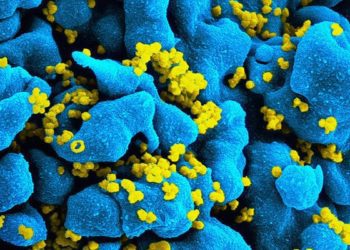Imaging in preoperative diagnosis in appendicitis can reduce unnecessary procedures: new study [Ann of Surgery]
Image: CC/ClintJCL
Key study points:
1. Preoperative imaging in the work-up of suspected appendicitis can lead to a reduction in unnecessary appendectomies, especially for women of reproductive age
2. Broad based, collaborative, peer-driven quality improvement programs can identify process of care interventions that lead to real outcome improvements
Primer: Under current practice standards, clinical assessment is sufficient to make a diagnosis of acute appendicitis. There is a certain frequency of negative appendectomies (NA), where a non-inflamed appendix is removed from patients mistakenly though to have appendicitis, that has been deemed acceptable to prevent underdiagnosis, delay in definitive therapy, and increase incidence of appendiceal perforation. However, there is accumulating evidence demonstrating that the addition of advanced diagnostic imaging such as computed tomography (CT) and ultrasound can be effective in reducing the number of negative appendectomies without a concurrent increase in perforation rates. While these imaging techniques have been integrated into the treatment algorithms in tertiary center, their utility has not been validated across a diversity of community settings. The report analyzes results from the Washington State Surgical Care and Outcomes Assessment Program (SCOAP) to investigate the use and efficacy of imaging and negative appendectomy rates in the wider community.
This [prospective] study: Utilizing data from SCOAP which encompasses essentially all the hospitals in the Washington state, they report on results from 19,327 patients in 55 hospitals over the last 5 years with a study population restricted to patients 15 years or older who underwent appendectomy in a nonpediatric SCOAP hospital between January 1, 2006 and December 31, 2011. Data was obtained directly from the clinical record and included radiological, operative, and pathological reports. Multivariate logistic regression analysis was undertaken to isolate and examine the association between imaging and NA. Overall NA rate was 5.4%. Among those with imaging, NA frequency was 4.5% versus those who were imaged at 15.4% (P < .001). In multivariate analysis, odds for NA in patients who were not imaged were 3.7 the odds for NA in patients who received imaging after adjusting for age, gender, and white blood cell count. Though the use of imaging increased and NA decreased significantly over time in these hospitals, the perforation rate remained unchanged.
In sum: The authors utilized a far-reaching data collection and outcomes improvement effort in the state of Washington to analyze the effect of advanced diagnostic imaging in the treatment algorithm for acute appendicitis as it becomes more widely integrated into the wider community. It should be noted that the use of diagnostic imaging in appendicitis is being prioritized by the SCOAP hospitals participating in the study as part of an effort to reduce unnecessary operations. The data show that over the past 6 years SCOAP hospitals have been successful at meeting this goal. Another aim of the study was to investigate the overall accuracy of the imaging diagnostics in question within the wider community outside of the rigorous standards of academic, tertiary institutions. Though the sensitivity for CT scan is comparable to those widely reported in the literature, the cumulative sensitivity for US was low, and this will be a continued target area for improvement within the SCOAP. Many of the study limitations are related to the breadth and scope of the dataset such that precise data collection methodology make it difficult to identify potential confounding variables, correct for sample bias, and gather data on true negatives. This study suggest that including preoperative imaging in the work-up of suspected appendicitis can lead to a reduction in negative appendectomy, particularly among women of reproductive age. It also suggests that CT provides a more accurate diagnostic tool than US in diagnosing acute appendicitis. Finally, it has demonstrated the value of broad based, collaborative, peer-driven quality improvement programs on identifying process of care interventions that lead to real outcome improvements.
Click to read the study in Annals of Surgery
By AH
© 2012 2minutemedicine.com. All rights reserved. No works may be reproduced without written consent from 2minutemedicine.com. DISCALIMER: Posts are not medical advice and are not intended as such. Please see a healthcare professional if you seek medical advice.




